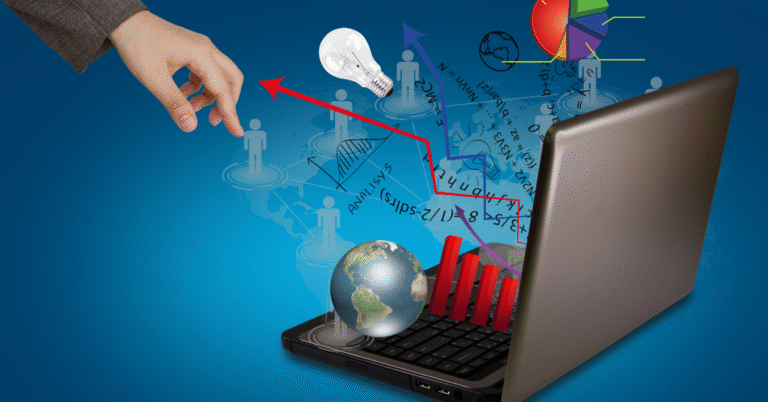Subtotal ₹0.00

In a digital-first world, marketing technologies evolve rapidly, and businesses that stay ahead of the curve benefit by reaching customers more effectively, engaging them more deeply, and gaining competitive advantage. Here are ten of the most important tech-driven digital marketing trends to watch right now — both globally and with relevance for Indian brands and marketers.
The first and most pervasive trend: AI is no longer optional — it’s integral. Across content creation, ad targeting, customer service, personalization, and analytics, AI is reshaping how marketing is done.
For example:
AI tools generate marketing copy, social-media posts or even video scripts, reducing time to publication.
Machine-learning models analyze user behaviour and optimize ad spend and targeting in real time.
Chatbots and virtual assistants powered by AI deliver 24/7 customer support and convert queries into sales interactions.
Search is no longer just typing keywords into Google. Voice search (via smart speakers and phones) and visual search (searching by image) are growing rapidly, changing how people discover information and products.
Key dynamics:
Users ask natural language questions (e.g., “Which sweater matches my style?”) rather than simple keywords.
Visual search: users snap pictures of objects or upload images to find similar items.
Multimodal search: platforms integrate text, image, and voice in a blended search experience.
Consumers increasingly expect tailored experiences: one-size-fits-all messages no longer cut it. Instead, data and marketing tech are enabling hyper-personalization, where each user is treated uniquely.
Examples:
Personalized product recommendations on e-commerce sites based on previous browsing/purchase behaviour.
Email campaigns that deliver different content/offer per user segment in real time.
Website experiences that adapt sections depending on user profile (location, device, past visits).
Video continues to dominate digital attention — but the format is changing. Short-form, snackable video (e.g., Reels, TikToks) and live-streamed commerce experiences are major growth areas.
Highlights:
Short clips attract high engagement and shareability; good for younger audiences.
Live streaming enables direct interaction and real-time commerce (social commerce).
Video content is also key for storytelling, brand building and product demos.
Technology is enabling more immersive marketing experiences: augmented reality (AR), virtual reality (VR) and metaverse-style engagements are no longer futuristic concepts—they’re being used now.
Use-cases:
AR “try-on” apps (e.g., fashion, makeup) allowing users to visualise products on themselves via camera.
VR brand experiences (virtual showrooms, immersive events).
Metaverse marketing: virtual brand spaces, gamified experiences and avatars.
Social media is evolving from a discovery channel to a direct commerce channel. This trend — social commerce combined with live-stream selling — is especially strong in markets such as Asia, including India.
What you’re seeing:
Shopping directly within social apps (no redirection to website).
Influencers and hosts selling products live (interactive, immediate purchase).
Integration of UI elements (tags, stickers) to let users tap and buy.
With increasing data availability and powerful analytics tools, marketing is becoming ever more measurable and proactive. It’s no longer enough to report past metrics — predictive analytics and real-time insights are taking stage.
Key aspects:
Real-time dashboards showing campaign performance, user flows, conversions.
Predictive models forecasting behaviour (e.g., who is likely to churn, who will convert) and enabling pre-emptive campaigns.
Marketing mix modelling and attribution to understand the true impact of channels.
As search behaviour changes (voice, visual, platforms beyond Google), the concept of search is expanding. Optimising content for these new formats is critical.
Emerging focus:
“Answer Engine Optimisation” (AEO) — Optimising for AI-powered platforms that provide direct answers (rather than just ranking webpages).
Ensuring presence across multiple search ‘channels’ (YouTube, TikTok, voice assistants, app stores) in addition to Google.
Structuring content so that the result is “featured snippet”-able, and image/voice queries are satisfied.
With increasing regulatory pressure (GDPR, CCPA, evolving Indian laws) and rising consumer concerns about privacy, marketing tech must adapt. Collecting, using, and protecting data ethically is no longer optional.
Important trends:
Shift from third-party cookies to first-party and zero-party data (data users willingly share).
Transparent communication with customers about data usage and opt-in consent.
Ethical marketing: brands aligning with values, sustainability and social good are gaining trust.
As marketing becomes more complex, automation across tools and platforms is growing in importance. Martech stacks (marketing technology) are converging — meaning fewer silos, better integration and smarter workflows.
What this looks like:
Campaign management tools that automate cross-channel workflows (email, social, ads).
“Martech stacks” that integrate CRM, analytics, automation and content platforms seamlessly.
Real-time decisioning — the system triggers actions automatically (e.g., send an SMS when a user abandons cart).